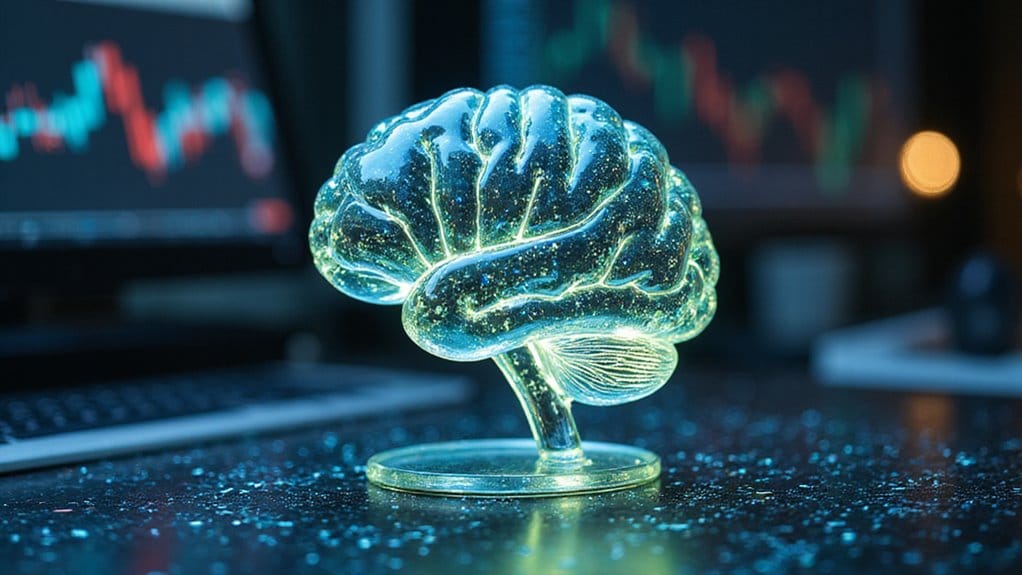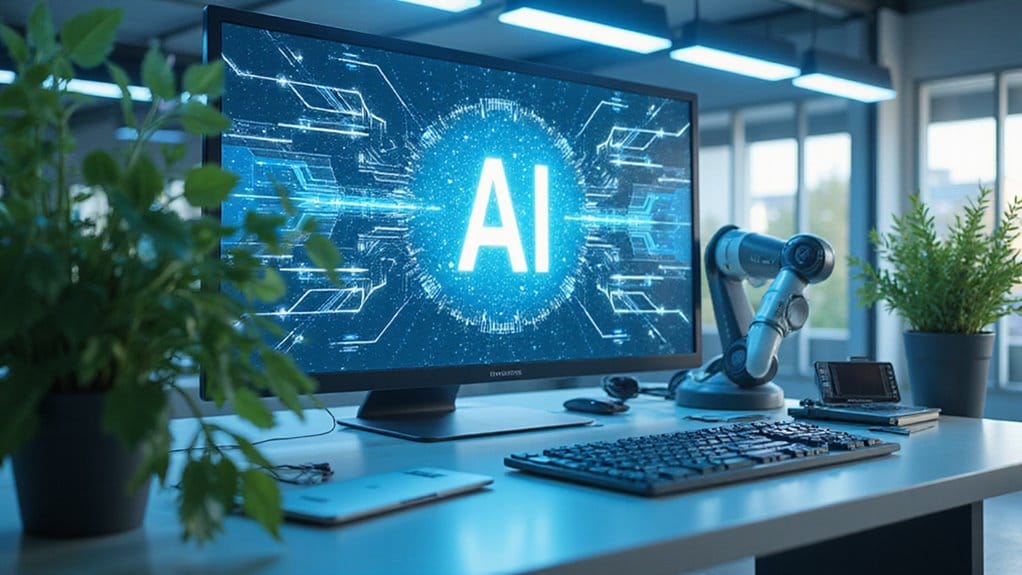An AI model is a smart system that mimics human thinking. It learns from data, so providing quality data is essential—consider it the food for our digital brain. Different tasks require different algorithms, like how baking needs a recipe. Think of it as creating an intricate machine that grabs insights from chaos. If you skip the prep, expect a meltdown! Want to know how these models revolutionize industries? Stick around for the finer details!

Understanding AI models is like peering into the brain of a digital genius—one that simulates human thinking and makes decisions all on its own. These models are designed to learn from data, just like you learn from experience, but without the late-night cramming sessions. They apply algorithms to recognize patterns and predict outcomes, transforming industries in the process. Healthcare, finance, entertainment—AI models are everywhere, making decisions faster and, hopefully, smarter than humans.
AI models mimic human thought processes, learning from data to make rapid, intelligent decisions across various industries.
Now, let’s break down the building blocks. First, you need data—the lifeblood of AI models. Without quality data, your model is like a chef with no ingredients. This is where data preprocessing comes in. It’s not just a fancy term; it involves cleaning, transforming, and normalizing data to make it usable. Think of it as washing and chopping vegetables before cooking. If you skip this step, prepare for a culinary disaster—or in this case, an AI model that’s more confused than a cat in a dog park.
Next up is algorithm selection. This is the set of rules that guides your model to learn from data. Different tasks require different algorithms. Want to predict house prices? Use regression. Need to recognize a cat in a photo? Neural networks are your best bet. Choosing the right algorithm is essential; it can make or break your model’s performance. Think of it as picking the right tool for a job—use a hammer to hang a picture, not a screwdriver! Additionally, problem-solving techniques are often employed to fine-tune your model, ensuring it addresses specific issues effectively. Furthermore, understanding the key components of AI models is crucial for developing effective solutions tailored to particular tasks.
Finally, remember that AI models are complex. They consist of weights and parameters that help interpret data, along with an architecture that dictates how information flows. If your model doesn’t learn effectively, it won’t deliver the insights you need.
Frequently Asked Questions
How Do AI Models Learn From Data?
AI models learn from data through two primary methods: supervised and unsupervised learning.
In supervised learning, they munch on labeled data, figuring out patterns like a detective solving a case.
Meanwhile, unsupervised learning lets them roam free, discovering hidden patterns in unlabeled data—think of it as a treasure hunt without a map.
Both methods are essential, so don’t skimp on quality data! Otherwise, those models might just end up lost in cyberspace!
What Types of Data Do AI Models Require?
AI models need various types of training data to function effectively. Picture numeric data for calculations, categorical data for sorting, and image data for visual tasks.
Don’t forget text data for understanding language! Feature selection is essential; it helps pinpoint what’s important.
Before diving in, always perform data preprocessing—clean it up, or risk poor results. Remember: garbage in, garbage out!
Can AI Models Make Mistakes?
Absolutely, AI models can make mistakes! They’re not perfect little robots.
Model biases can sneak in, skewing results unfairly. Conduct error analysis to catch these blunders early. If you skip this crucial step, you might end up with a model that hallucinates or misrepresents reality.
How Do We Evaluate AI Model Performance?
Evaluating AI model performance is essential, and it goes beyond just crossing your fingers and hoping for the best.
Use accuracy metrics to see how often predictions hit the mark. And don’t forget about performance benchmarks! Compare your model against the best in the game.
Check for overfitting and bias; trust us, you want to avoid those pitfalls. So, roll up your sleeves and plunge into the data—you’ll thank yourself later!
What Are Some Real-World Applications of AI Models?
AI models are revolutionizing various fields. In healthcare diagnostics, they detect diseases faster than a doctor can say “oops.”
Autonomous vehicles use AI for safer driving — no one wants an unexpected joyride!
Customer service chatbots handle inquiries with impressive speed.
Fraud detection? AI spots shady activities before you can blink.
Personalized marketing tailors ads just for you.
And don’t forget predictive maintenance and sentiment analysis, enhancing efficiency and understanding.
Exciting, right?









